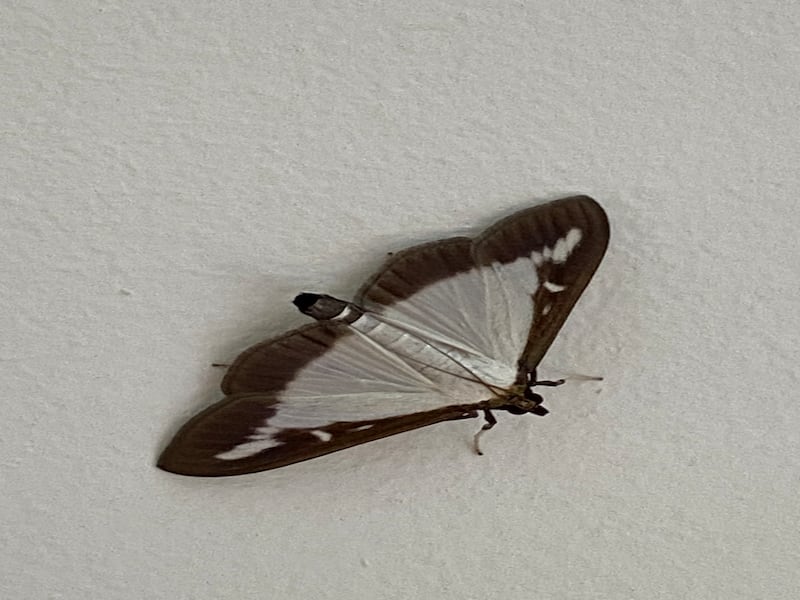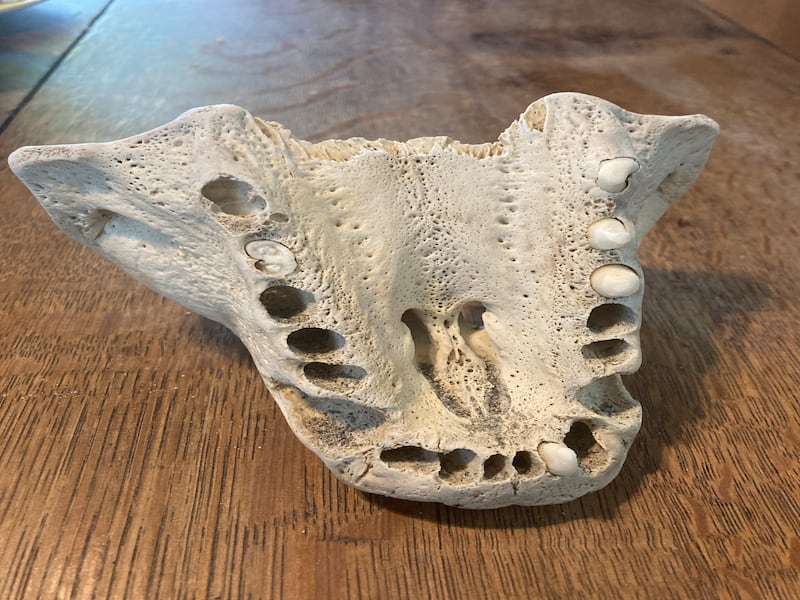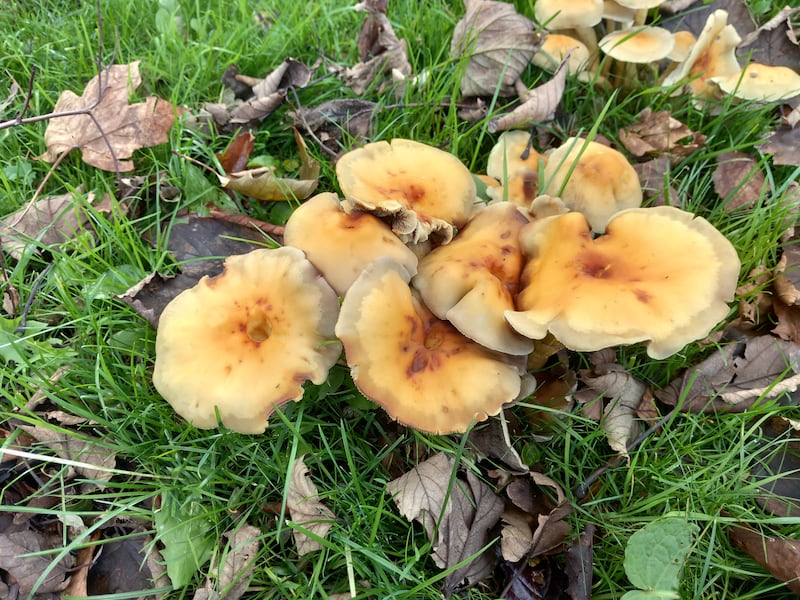Eric Dempsey of birdsireland.com sent in this picture of the short-eared owl. The short-eared owl is a scarce winter visitor to Ireland and rarely occurs here in any numbers. This winter, however, following northeast gales in November, 10 were spotted at Tacumshin in Wexford. Five turned up in Newcastle, Co Wicklow, and three in Balbriggan. This large, day-flying owl with bright yellow eyes breeds in northern Europe. Most of our winter visitors come from Scotland. Some of the relatively large number here this year may have come from mainland Europe and be indicative of a particularly good breeding season there.

This moth appeared on my kitchen ceiling recently. It seems to be a melonworm moth and it doesn’t appear to have been recorded in Ireland before, unless I’m mistaken?
Kate Horgan, Dublin 6
You are mistaken, I am afraid. The melonworm moth only occurs in eastern North America. This is the box tree moth, first trapped as an adult at Tramore in July 2017. By September 2018, box tree caterpillars were recorded demolishing the leaves on the box hedges in Blackrock and Rathfarnham in Dublin. The genie is well and truly out of the bottle now and box hedges everywhere are under threat.
READ MORE

I would appreciate your opinion on this unusual caterpillar that I came across walking on a tarred road surrounded by natural woodland.
Marie Drumgoole, Co Donegal.
In my opinion, this is a much more civilised species than the invasive box moth. It is the caterpillar of the native pale tussock moth, that feeds on the leaves of broad-leafed trees such as hazel, oak, blackthorn and hawthorn. It is often seen wandering on the ground in autumn before pupation. It makes a hairy silken cocoon among the leaf litter and overwinters as a pupa. It will emerge as a light grey moth next spring.

We were away for the weekend, and we found this jaw on the beach.
Marie Mullen, Co Mayo
You don’t say where you went, but assuming it was an Irish beach, this is a portion of the top front half of a seal’s skull. It is most likely that of a grey seal, the more common and larger of our two seal species. The skull of a grey seal is about 27cm long in its entirety, while that of the common or harbour seal is 23cm long. You give no indication of size, so identification cannot be definite.
[ What are these mushrooms I found on Kilrush golf course?Opens in new window ]

These fungi are under a beehive. They are a nice colour. Could you oblige with an identification?
Paul Dunne, Co. Galway
This is a young, developing, distinctly clustered group of the sulphur tuft fungus – Hypholoma fasciculare. The fungus grows on dead tree stumps and roots which can be underground as in this case. Don’t even think of eating it – it contains a toxic steroid and consuming it can cause vomiting and convulsions.
[ Eye on Nature: Bird on the loose, unusual seaweed and cucumber spidersOpens in new window ]

Walking home from the shops the other day I saw this colourful sight. Is it the honey mushroom, and if so, what part in nature does it play?
Bobby Carty, Co Dublin
This is a much older stage of the same sulphur tuft, which typically forms clusters of yellow-brown fruit bodies with a greenish-yellow tinge on the gills. It is widespread and common, growing as a saprobe, which means it grows on dead timber rather than on living trees. It decomposes both deciduous and coniferous wood and, in the process, recycles nutrients and provides habitats for a succession of other organisms. The honey mushroom with which you are confusing it, belongs to a different group – the armillarias. It spreads by tough black strands and indeed is often also called the bootlace fungus.
Please submit your nature query, observation, or photo with a location, via irishtimes.com/eyeonnature











